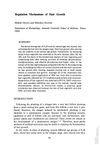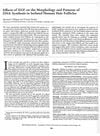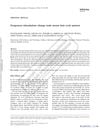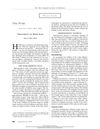TLDR EGF controls hair growth by regulating hair follicles' growth phases.
The study demonstrated that Epidermal Growth Factor (EGF) played a crucial role as a biological switch in the hair growth cycle, particularly in the transition between anagen (growth phase) and catagen (regression phase). Continuous EGF expression in transgenic mice arrested hair follicle development, indicating that EGF signaling through EGFR/ErbB2 was essential for initiating hair growth. Inhibitors of EGFR and ErbB2 halted hair growth in wild-type mice but not in transgenic mice. Breeding experiments with waved-2 mice, which have lower EGFR activity, rescued the hair phenotype, confirming the role of EGF. The findings suggested that manipulating EGF signaling could offer therapeutic approaches for treating conditions like abnormally thin hair or unwanted hair growth.
 25 citations,
April 2015 in “Current problems in dermatology”
25 citations,
April 2015 in “Current problems in dermatology” Hair regrowth slows with age and can be affected by treatments that change enzyme activity in the skin.
 6 citations,
April 1996 in “Journal of histochemistry and cytochemistry/The journal of histochemistry and cytochemistry”
6 citations,
April 1996 in “Journal of histochemistry and cytochemistry/The journal of histochemistry and cytochemistry” TGF-alpha is present in sheep and ferret skin and may affect hair growth without directly stimulating cell proliferation.
 94 citations,
February 1994 in “The journal of investigative dermatology/Journal of investigative dermatology”
94 citations,
February 1994 in “The journal of investigative dermatology/Journal of investigative dermatology” EGF makes hair follicles grow longer but stops hair production.
578 citations,
April 1993 in “Cell” TGFα gene mutation in mice causes abnormal skin, wavy hair, curly whiskers, and sometimes eye inflammation.
745 citations,
February 1992 in “Trends in genetics” Hair follicles create different cell layers and proteins, controlled by various molecules.
13 citations,
March 1988 in “Experientia” Anti-EGF serum affects growth and development in newborn mice.
 1 citations,
January 2015 in “Genetics and Molecular Research”
1 citations,
January 2015 in “Genetics and Molecular Research” Stopping S100A3 activity slows down hair growth in mice.
 2 citations,
October 2010 in “Journal of dermatological treatment”
2 citations,
October 2010 in “Journal of dermatological treatment” External treatments can change hair growth patterns in nude mice.
 370 citations,
September 1999 in “The New England Journal of Medicine”
370 citations,
September 1999 in “The New England Journal of Medicine” Finasteride and minoxidil are effective for hair loss, but continued research is needed for better treatments.







